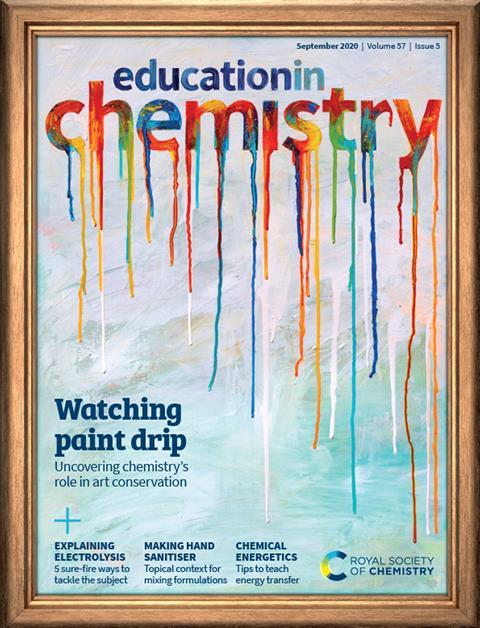Ideas for your classroom and teaching from our September 2020 issue
Covid-secure teaching ideas

- A teacher-only demo to fire up students – by using water to light a match. Ideal for discussing the properties of water or enthalpy
- Get disengaged learners back on track by reflecting on their learning at home and help them turn their reflections into actions
- Worried about back-to-school behaviour? Transform your classroom behaviour culture with these ideas
- How to write effective questions for formative assessment
- Which technologies from the past six months will teachers stick with once they’re back in school?
- One view on what practical classes might look like this year
- Expert teachers answer NQTs’ queries in our new column, Classroom questions
Teaching tips
- The latest in education research, including a scaffolding method to improve students’ scientific argumentation skills and tips on how to use concept maps and creative exercises to boost students’ conceptual understanding
- Useful strategies for linking education research with your own practice
- 5 tips to explain electrolysis to your students
- Banish chaos from your practical lessons and improve students’ learning with this step-by-step method
Worksheets and starter slides
- Starter slides on hexagonal salt and ionic/covalent structures, new solar cell and battery technology and a novel way of breaking bonds in alkanes
- Enhance your teaching of materials and explore how new types of concrete could reduce carbon emissions, with differentiated, synoptic worksheets to assess recall and identify revision topics (14–16)
- Making hand sanitiser: a topical angle for dicussing mixtures and formulations, with an activity to boost literacy and numeracy skills (11–14)
- Teaching analytical chemistry? Show students this article on the origins of the moon, accompanied by a simple experiment aiming to identify a chunk of meteorite based on its nickel content
- Analytical chemistry meets art: have students read how chemists are conserving paintings (with retrieval practice for 16–18) and introduce a careers’ angle with this article about a chemist working at the National Gallery
- Use this worksheet, ’Why should we believe in the rectivity series?’ to improve students’ ability to evaluate scientific evidence
- How to teach chemical energetics at 11–14 and encourage students to visualise the chemical changes and energy transfer in exo- and endothermic reactions
- Help students see graphs as more than just pictures with these tips, diagnostic exercise and cooling curves-based practical







No comments yet